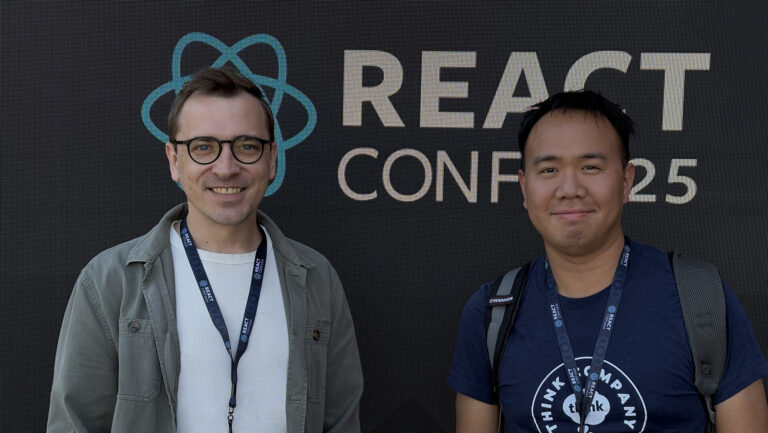Demystifying agile and scrum in design and development

The world of product development is riddled with buzzwords. Scrum and Agile may be two of the most prominent, yet least understood of the bunch.
Over the years, we’ve worked on numerous engagements with clients using some flavor of Agile methodology, and noticed each organization has their own unique implementations. They often define roles and responsibilities differently, and they use ceremonies and artifacts in ways we may not quite expect or recommend.
These differences arise across organizations and may impact product outcomes. With that in mind, is there truly a “right” way of running a product design team?
In the search for an answer, Kristi and I attended a two-day class, hosted by LeadingAgile, to earn our Scrum for Product Owners Certification (CSPO). We wanted to gain a deeper understanding of the foundational principles and exact intent of the Scrum framework so that we can better help our clients implement Agile methodologies in their products and organizations, more easily diagnose pain points, and identify areas of opportunity. As design and technology consultants, it’s our job to understand the nuances of these frameworks so that we can find creative and effective ways to solve problems within them—and help our clients achieve positive outcomes.
Over two days, we reinforced our understanding of Scrum’s intricacies and how to use it to increase both productivity across teams and value to a business as a whole. The training itself was even run like a Scrum team—all of our lessons took place during four sprints over the course of the two days. We formed into two Scrum teams, each of which had a designated Scrum Master and Product Owner. We defined our sprint goals, picked topics and activities from the product backlog and prioritized them in the sprint backlog, held retrospectives to help inform the next sprint, and all along the way tracked and reported our progress. This fun and immersive approach gave us hands-on experience with the values, roles, artifacts, and ceremonies as Scrum intended.
The Basics of Scrum and Agile
Agile is an iterative, incremental approach to building products. Requirements aren’t necessarily defined up-front, but instead revised throughout the process by engaging with customers and soliciting feedback early and often.
Scrum—being one of the more popular Agile frameworks—is the one we encounter most at Think Company. The foundational pillars of Scrum include transparency, inspection, and adaptation. Within Scrum, different roles, artifacts, and ceremonies are clearly defined to provide organizations and teams the tools needed to deliver value for the business and its customers. Features are prioritized and kept in a backlog, and worked on in sprints—typically two weeks at a time. A Scrum team should always be composed of a Scrum Master, Product Owner, and Development team.
And that’s basically it…
Well, there’s a little more to it than that. Scrum, or any Agile framework, is a set of tools and practices for getting work done more efficiently. The power of Agile lies in its underlying principles and values: creating customer value, continuous iteration and delivery, embracing change, empowering teams, and maintaining transparency and communication.
When the principles of Agile are combined with a framework like Scrum, teams are able to find purpose in clearly-defined output and value-driven outcomes.
Using Scrum provides stakeholders and teams many advantages, including:
- Higher morale through greater ownership and autonomy
- Prioritized features with well-defined goals and outcomes
- Rapid iteration using a predictable, flexible workflow
- Increased transparency and communication between stakeholders and teams
- Improved feature delivery and working cadence
Want to learn more?
We’d love to talk through your upcoming Agile or team-based project and see how we can help.
Considerations and Challenges for Teams
One key implementation factor is the kind of environment required for Scrum to be successful. First and foremost, for any company thinking about incorporating Agile methodologies, it’s important to understand exactly what that means and what kind of change to the organization’s current processes and team structures may be required. Individuals may need to take on new roles and responsibilities, and be open to a different way of thinking about how work gets done.
It can be uncomfortable for executives and stakeholders to adjust to the uncertainty that comes with Agile, and organizations who are used to working in a more linear fashion—also commonly referred to as “waterfall”—may find switching to Agile challenging because of the entirely new mindset it requires. Predictability breeds comfort, and Agile can feel a little unpredictable.
Some of the common struggles we’ve seen with clients adopting Agile and Scrum include:
- Remaining tied to using non-Agile methodologies
- Not clearly defining and communicating roles and responsibilities across product team members
- Having difficulty with giving design and development teams the autonomy they need to thrive
- Feeling discomfort with a plan that is always changing (or as we like to say, evolving)
- Lack of transparency and/or communication between stakeholders and teams
When we work with clients using Agile or Scrum, our focus is on making sure everybody’s speaking the same language. It’s critical to constantly assess the landscape and ensure people understand their roles and responsibilities. Perhaps more importantly, the entire team should understand who the customer is, what the customer’s needs are, and how the features that the team is building will provide value to the customer.
Everybody benefits when the team has a firm grasp on what’s expected of them, the impact of the work they’re doing, and a shared vision and definition of success.
Agile and Scrum Can Bring Huge Value to Projects and Organizations
All in all, Scrum and Agile are more than just buzzwords. When used as intended, these methodologies provide the tools that lead to successful customer and business outcomes through consistent transparency, inspection, and adaptation. Any organization thinking about adopting them must know what will be asked of their teams. Using Agile could mean a transformation of the fundamental way an organization conducts business—which is no small undertaking. However, a successful implementation could also mean a massive increase in the value an organization can provide to its customers.
No methodology or framework can guarantee greater efficiency or increased revenue, but with the right guidance and a commitment to a new way of thinking, organizations can focus instead on what they do best: creating great products and experiences. And that’s what we’re all about.



